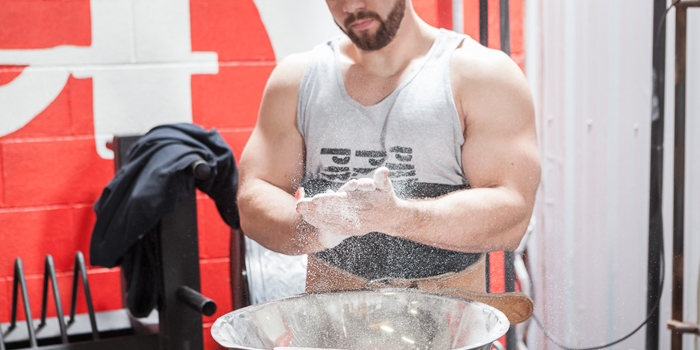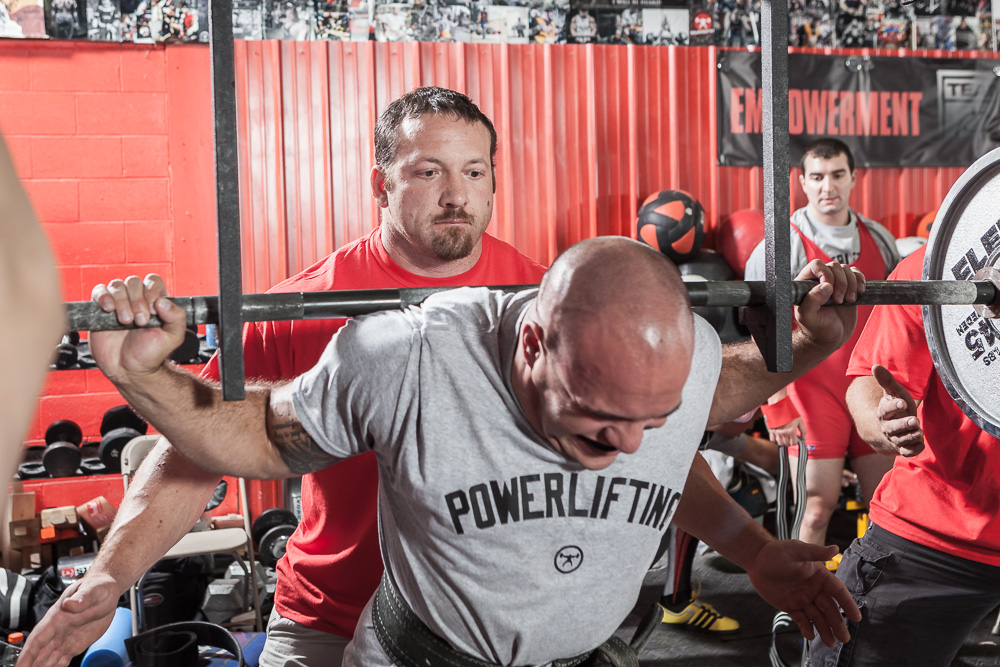
Leg warmers.
Carrying around a boombox.
Time Under Tension.
That’s a list of things that went out of style in the 1980s.
Three of those can stay dead and buried, but one should be welcomed back with open arms.
Time under tension training may be more associated with the bodybuilders of yesteryear, with the Mike Mentzer style of HIIT training springing to mind, but it’s not something to dismiss entirely.
In fact, powerlifters and strength athletes could benefit a hell of a lot from giving more credence to time under tension. It might not rival total volume, training frequency or exercise selection in terms of what matters most, but it certainly has a role to play in any training program.
What is TUT?
Time under tension is the amount of time a muscle spends under strain during a set.
This typically lasts from the time you pick the weight up until you set it down again. The only exception would be an exercise like deadlifts, where you might set the bar down completely between reps, or even stand up and take a few seconds to reset.
Why Does it Matter?
The longer a muscle is under tension, the better it is for growth … to a degree.
A 2012 study from the Journal of Physiology concluded the following:
“These data show that greater muscle time under tension increased the acute amplitude of mitochondrial and sarcoplasmic protein synthesis and also resulted in a robust, but delayed stimulation of myo- fibrillar protein synthesis 24–30 h after resistance exercise.” (1)
A greater time under tension results in more muscle damage, elevated metabolic stress and a bigger build up of metabolytes, which will indisputably drive growth. And a bigger muscle is a stronger muscle.
Isn’t That All About Bodybuilding?
You’d think so, but not necessarily.
Aside from the fact that hypertrophy is a key player in becoming a better, stronger, more technically-proficient lifter, a longer time under load gets you used to lifting more.
Let’s take a squat using 315 pounds for example.
You could knock out a set of five reps where you dive-bomb each one – dropping down quickly on the eccentric, bouncing out of the hole, and blasting back up. Or you can control the eccentric for two to three seconds, pause for a second or two, then drive back up forcefully for five reps.
On paper, you’ve still done the same total volume, yet the second, more controlled set with a longer TUT will have created more muscle damage (so more hypertrophy) and also meant you used far better technique. You’ve spent more time under the bar, and that’s a huge factor in getting stronger.
Focusing a little more on TUT also means you’ll improve technique. If you blast through every single rep, concentrating purely on hitting your numbers, you’ll eventually hit a sticking point caused by bad form. If we look at the squat again, by performing reps quickly, you’re more likely to see your knees cave inwards, your hips shoot up early, or use your lower-back to virtually good morning the weight up.
Try to lift like this with a longer TUT, and you’ll quickly find yourself with your ass on the floor, as you can’t maintain crappy technique with a more controlled tempo.
Being able to lift with a longer TUT in training also means that during competition conditions, there’ll be no nasty surprises when the judge calls for a longer pause on the bench press, or you want to make extra sure that you control the negative on your squat to show you broke parallel.
How Does It Help Fix Weak Points?
Often, it’s incredibly difficult to accurately gauge what your weak points are if you’re always lifting with maximum speed. Slowing down what you do slightly means you can accurately assess exactly where form breaks down, without needing to hire a coach or ask a training partner.
MORE: Re-Examining the Re-feed
TUT as a Mode of Progression
The longer you’ve been training, the harder it is to progress from workout to workout, and you won’t be able to add weight, reps, or sets every single session, so you have to look for subtle ways to get better.
TUT comes in very useful here. Say one week you did five sets of four front squats with a two-second negative, the next week you could try five sets of four using the same weight, but with a three-second negative. Now you've progressed without changing the weight or rep count.
Is There a Cut Off?
If you based everything you did purely on TUT, then in theory you could just squat an empty bar really slowly, non-stop for an hour. But that clearly wouldn’t get you stronger, so there is a trade off.
You still need to lift heavy enough to stimulate growth and neuromuscular adaptations by lifting in the 60-75% range for hypertrophy and the 80%+ rep range for strength. Also, when performing the competition lifts, you should always try to perform the concentric portion as quickly and explosively as possible. But when it comes to the eccentric, and the paused portions of reps, TUT is a neat addition to your program.
Take Home Points:
- Keep the focus on shifting maximal loads as quickly as possible on your competition lifts.
- TUT should mainly be applied to the eccentric phase of exercises.
- Use a slower TUT on accessory work to aid hypertrophy.
- You don’t need to be glued to a stopwatch, but stay strict with your counting.
- As you get closer to a meet, reduce the amount of TUT training you do, so as not to create too much muscle damage, and to train more closely to how you’ll lift on the day.
- Don’t be a dick by doing squats, deadlifts and bench presses with slow concentrics. That won’t do you any good whatsoever.
References
- https://www.researchgate.net/profile/Joshua_Cashaback/publication/51817849_Muscle_time_under_tension_during_resistance_exercise_stimulates_differential_muscle_protein_sub-fractional_synthetic_responses_in_men/links/0c9605235bf1719301000000.pdf
Mike Samuels is an online coach, writer and powerlifter. He lifts in the GBPF under-74kg category, and has also competed in natural bodybuilding shows with the British Natural Bodybuilding Federation. Mike trains clients looking to get leaner and stronger, and specializes in working with natural bodybuilders and powerlifters. For more information, check out his website, www.healthylivingheavylifting.com.










